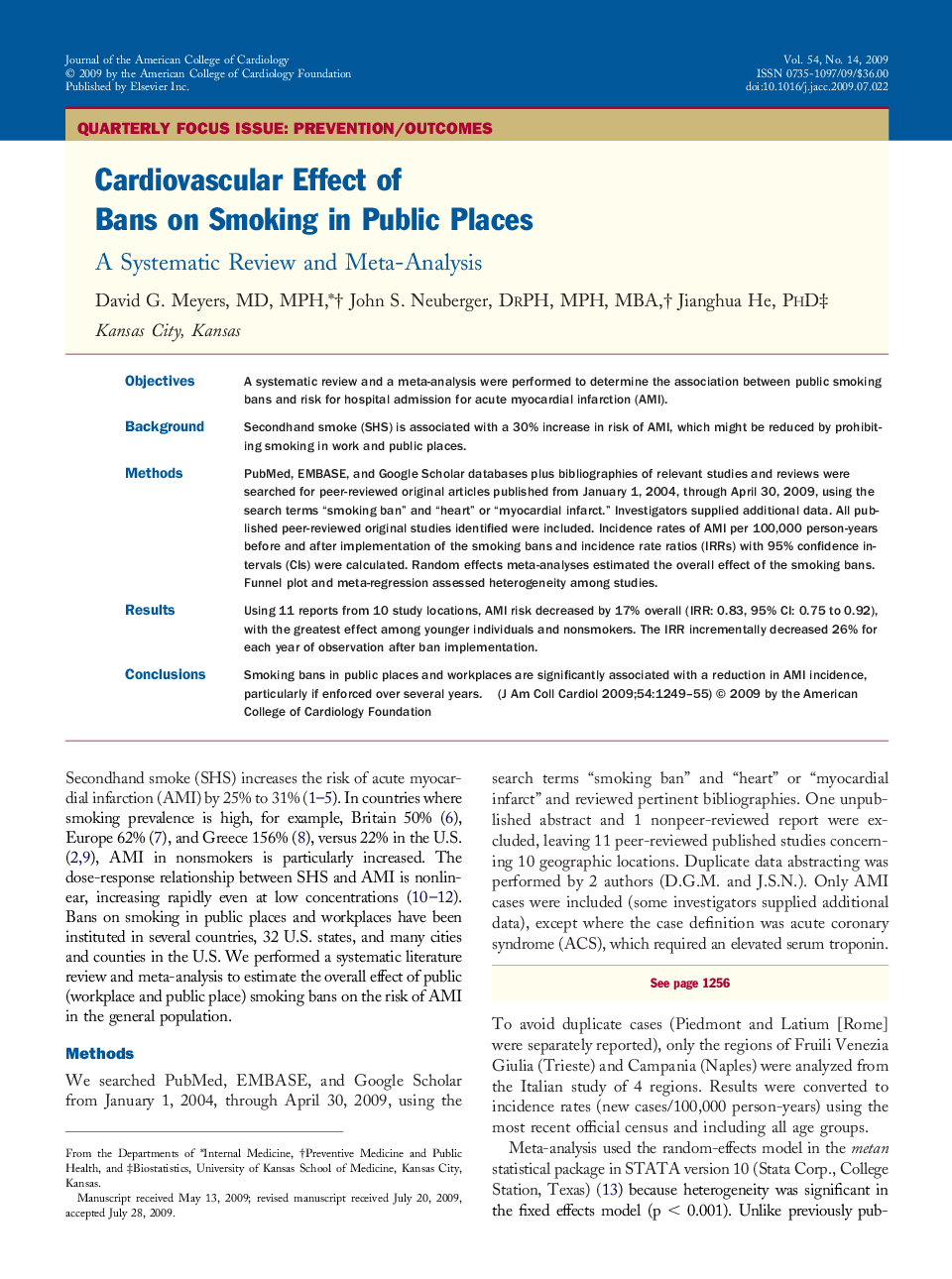| Article ID | Journal | Published Year | Pages | File Type |
|---|---|---|---|---|
| 2951671 | Journal of the American College of Cardiology | 2009 | 7 Pages |
ObjectivesA systematic review and a meta-analysis were performed to determine the association between public smoking bans and risk for hospital admission for acute myocardial infarction (AMI).BackgroundSecondhand smoke (SHS) is associated with a 30% increase in risk of AMI, which might be reduced by prohibiting smoking in work and public places.MethodsPubMed, EMBASE, and Google Scholar databases plus bibliographies of relevant studies and reviews were searched for peer-reviewed original articles published from January 1, 2004, through April 30, 2009, using the search terms “smoking ban” and “heart” or “myocardial infarct.” Investigators supplied additional data. All published peer-reviewed original studies identified were included. Incidence rates of AMI per 100,000 person-years before and after implementation of the smoking bans and incidence rate ratios (IRRs) with 95% confidence intervals (CIs) were calculated. Random effects meta-analyses estimated the overall effect of the smoking bans. Funnel plot and meta-regression assessed heterogeneity among studies.ResultsUsing 11 reports from 10 study locations, AMI risk decreased by 17% overall (IRR: 0.83, 95% CI: 0.75 to 0.92), with the greatest effect among younger individuals and nonsmokers. The IRR incrementally decreased 26% for each year of observation after ban implementation.ConclusionsSmoking bans in public places and workplaces are significantly associated with a reduction in AMI incidence, particularly if enforced over several years.
